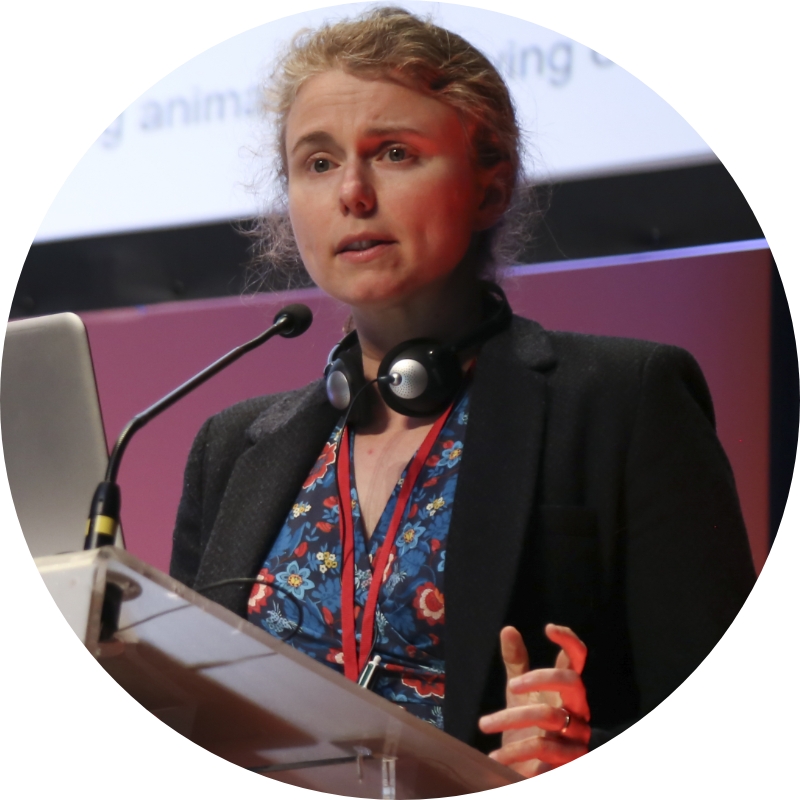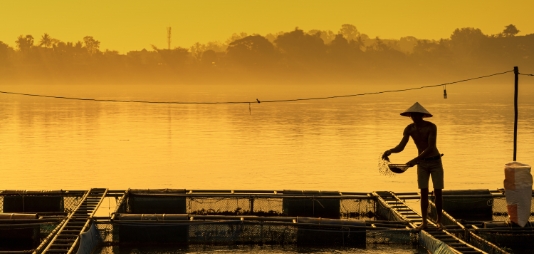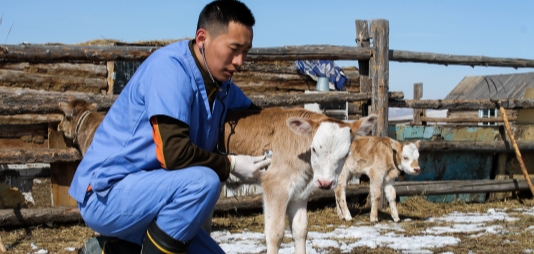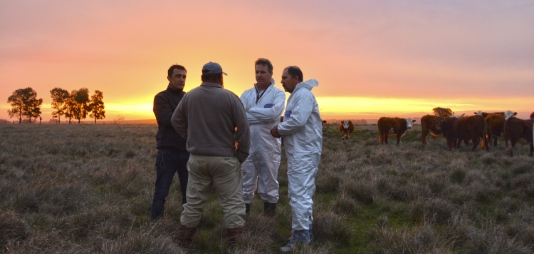INTERVIEW
Coordinating
a regional response
to African horse sickness
2020 saw South-East Asia’s first cases of African horse sickness in its history. The World Organisation for Animal Health (OIE) and regional partners helped countries contain the disease and halt its spread. Dr Laure Weber-Vintzel was part of the team on the frontline during the crisis.

OIE Deputy Sub-Regional Representative of South-East Asia
What is African horse sickness?
L.W.V. African horse sickness, or AHS, is a viral equine disease reported in many countries of sub-Saharan Africa. It has exceptionally spread to North Africa, Southern Europe, the Middle East as well as to India. Thailand reported its first AHS outbreak in early 2020 followed by Malaysia who reported the disease in September. African horse sickness is transmitted by blood-sucking midges. It is deadly. It can kill up to 95% of infected horses, and it also affects other equids, although less severely. Mortality in mules is around 50%, while infected donkeys and zebras may only show mild symptoms.
African horse sickness can kill up to
%
of infected horses
How did the response play out in Thailand’s African horse sickness outbreak?
L.W.V. Thailand reported AHS to the OIE on 27 March 2020 through the World Animal Health Information System (OIE-WAHIS). This platform is used by all OIE Members to report information on the animal health situation and to alert the international community of exceptional events like this one.
Over the course of 2020, Thai Veterinary Services counted almost 600 horse deaths. This was the first time African horse sickness had ever been reported in South-East Asia. Because of this, there was very little knowledge of the disease in the region. To make things more complex, restrictions linked to the COVID-19 pandemic prevented us from providing the direct and conventional support we offer in such cases, like mobilising international AHS experts in the field. Nevertheless, we knew that there was a risk of AHS spreading further in Thailand and to other countries, so we had to act fast.
First and foremost, it was very important for us to provide as much science-based information on the disease as we could to a wide range of professionals in Thailand and neighbouring countries. We conducted a series of webinars with experts to provide them with the technical information that was needed immediately to limit the spread of the disease. These webinars were watched more than 2 000 times on the OIE YouTube channel. We reached out to all relevant actors: Veterinary Services of course, but also provincial authorities, private equine vets, people from the horse industry, and NGOs involved in working equids.
Because raising awareness was a critical point in this crisis, we also set up a repository to make any communication on AHS available and accessible for everyone on the OIE regional website for Asia and the Pacific.
What part did collaboration play in the response?
L.W.V. Collaboration was key to the rapid response to the African horse sickness outbreak. Our partners and Members used the repository in our regional website to share documents, posters and leaflets. For instance, one partner, the International Coalition for Working Equids, had developed material specifically targeting Asian working equid owners and made it available in five regional languages on our website. An NGO specialised on working equids in Cambodia also supported the national Veterinary Services by providing nets and insect repellent to protect the stables and horses. In collaboration with our network of experts and partners, we released guidelines to support countries in preparing and implementing an emergency vaccination strategy against AHS.
The African horse sickness outbreaks in Thailand and Malaysia in 2020 showed us once again the critical role of partnerships in preventing and controlling animal diseases.
What impacts did the outbreak have on the country?
L.W.V. African horse sickness impacted animal health: almost 600 horses died as a result of the disease. As equestrian sports are quite developed in Thailand, it also had a direct impact on the country’s horse industry. Because of AHS, horses could no longer travel to perform at national, regional or international races, and competitions were cancelled. As for working equids, the movement restrictions affected the livelihood of owners that were already living a difficult situation economically, because of COVID-19. Equids were kept in nets for long periods of time to protect them from vectors, which also raised animal welfare issues.
What must a country do to recover its official AHS free status recognised by the OIE after an outbreak?
L.W.V. As a first step, the country must control and eradicate the disease. Then, the authorities need to provide evidence that the country has been free from AHS for two years, based on the outcomes of their surveillance programme, and that no routine vaccination against the disease has been carried out during the past year. This will not be enough: the country will also be required to demonstrate that it complies with other relevant OIE Standards and that the gaps in their prevention system–which have allowed the introduction of the African horse sickness virus in the first place–have been investigated, understood, and addressed. Only then can an OIE Member apply for the recovery of its AHS free status within three years after its suspension, following the OIE dedicated procedure.
An OIE official status reflects the level of transparency of a country and facilitates safe international trade of animals and their products.
What did you learn from this outbreak that may help contain African horse sickness in other regions of the world?
L.W.V. This event showed once again how critical partnerships are. Yet, collaborations between the public and private sectors are not in place in all countries. It is best to promote these partnerships before they are needed in an emergency and, to this end, the OIE has several materials available to support its Members.
Also, in some countries the health status of imported wildlife species or exotic breeds of animals is not always under the supervision of Veterinary Services. This means that some wild animals may be able to enter countries without proper health checks and quarantines. The OIE has been recommending its Members to strengthen their Veterinary Services and give them the capacity and legal responsibility to control all animal health and welfare matters, including the health of imported live animals.
Another challenge we faced in South-East Asia has been the procurement of AHS vaccines. In order to be better prepared, we must ensure that regulations and protocols are in place to allow Veterinary Services to rapidly import the most appropriate vaccines in case of an emergency. This is not only for African horse sickness, but also for all animal diseases.
Funding for the production of regional materials on African horse sickness: Australia and the People’s Republic of China.


